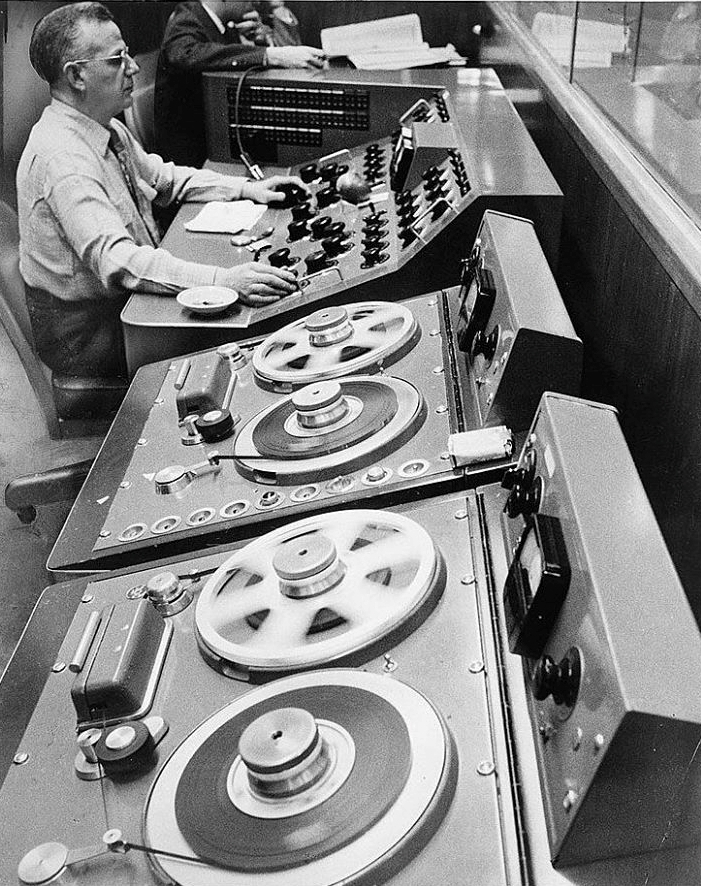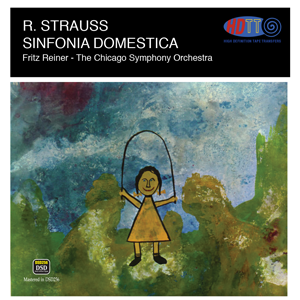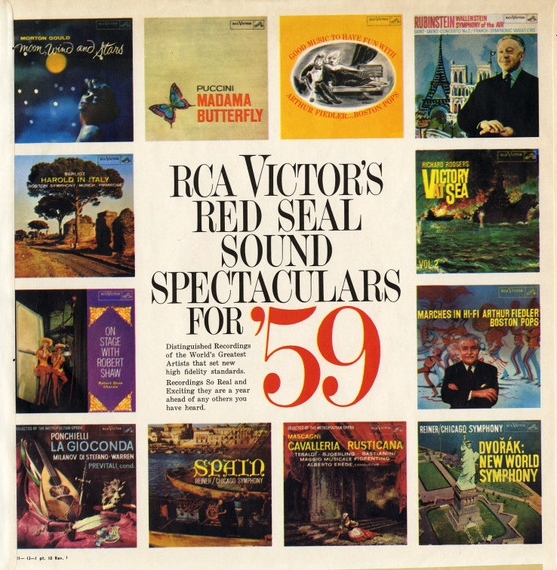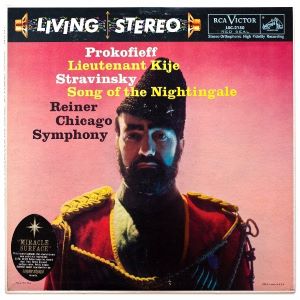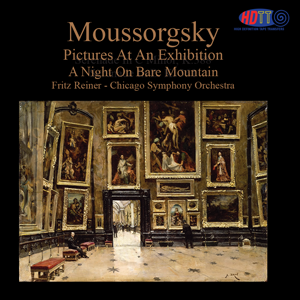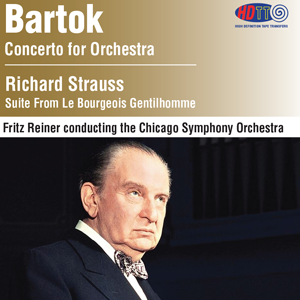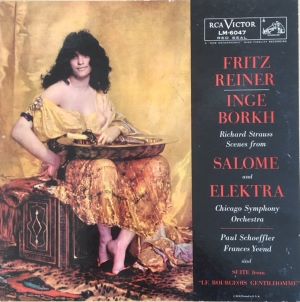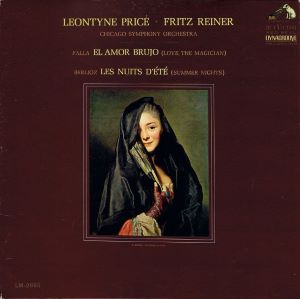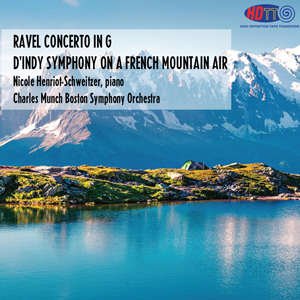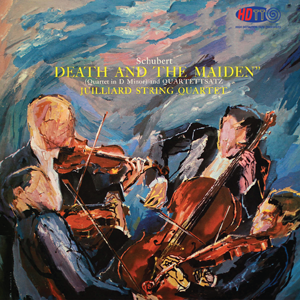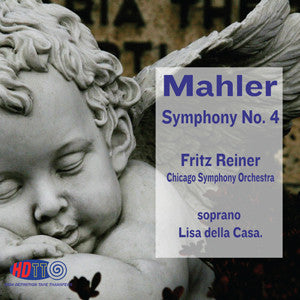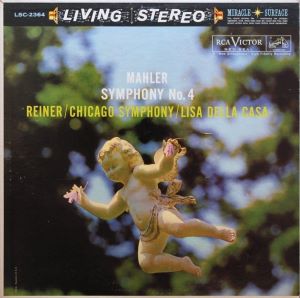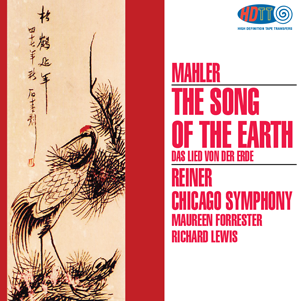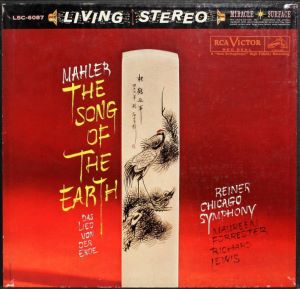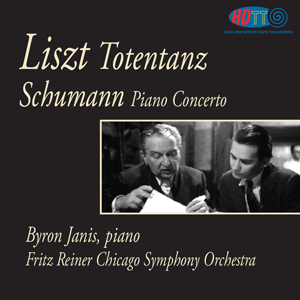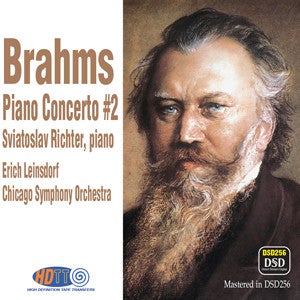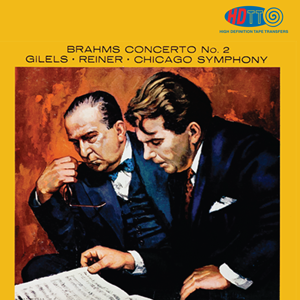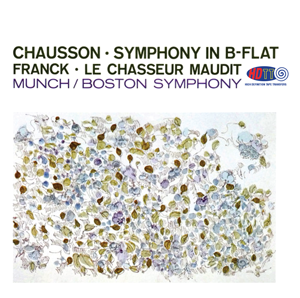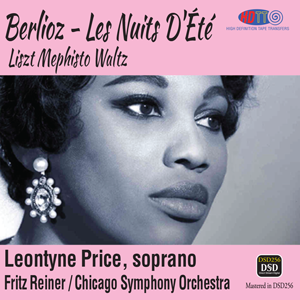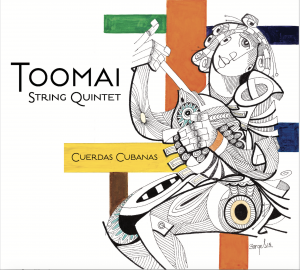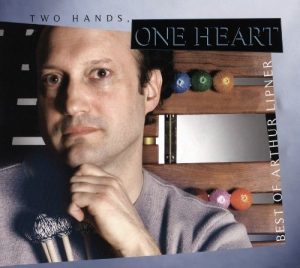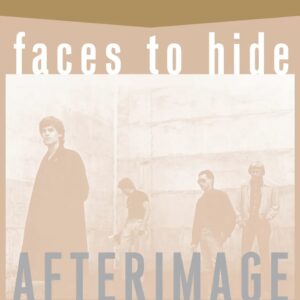Lewis Layton is among that small pantheon of engineering greats who made the golden age of stereo such a wonderful period. I've long admired his work for RCA. Many of his recordings are among the greatest classical music recordings ever made. High Definition Tape Transfers carries a great number of them. It's time to take a look at some...
A sampling of RCA Living Stereo covers (click to open larger image). HDTT may not have all the music from all of these albums. But they certainly have many of these recordings, often paired differently and with different cover artwork.
I've elected to place the original RCA covers in the montage above because they will be quickly recognized by many of you. If you don't know these recordings, you should become acquainted. These recordings are treasured for the amazing artists that grace them, but revered for the superb sound quality delivered by so many. And most of these U.S. venue recordings are the work of recording engineer Lewis Layton.
(As I've written elsewhere, many of the other famous RCA recordings not shown above were recorded for RCA by Decca under contract, and most commonly by Kenneth Wilkinson. For a discussion of the work of this Decca legend, HERE.)
Lewis Layton at the control board for an RCA recording. From the RCA PART 1 Film 1956 - How RCA Vinyl Records Were Made
Lewis Layton (1900 - 1964) was RCA's finest recording engineer of the time, in my opinion. He is solidly in my pantheon of the great recording engineers of the stereo golden age, along with very few others. Just take time to listen to his 1956 recording of Fritz Reiner and the Chicago Symphony Orchestra in this performance of Richard Strauss' Sinfonia Domestica to understand why.
Richard Strauss: Sinfonia Domestica, Reiner, Chicago Symphony Orchestra. HDTT. 1956, 2020 (DSD256, PureDSD) HERE (shown above in the original artwork for the RCA U.K. cover)
This is a Pure DSD256 transfer from analog tape with no processing in DXD. While a DXD render is available, it is a render from this DSD256 master. Bob Witrak does not specify the precise tape found to use in making this transfer, but like a number of transfers he's released, this sounds like a 2-track 15ips tape (but I have no knowledge of whether it is or not). The main issue for us listeners is that the sound quality is beautifully open and transparent, with thunderous bass and airy highs.
Captured with a minimal number of microphones (likely more than the mythical three, but likely less than nine), this 1956 orchestra recording has the frequency extension, bass impact, resolution of detail, and soundstage specificity we still often fail to achieve in modern recordings. Of course, that this is a recording of the great Chicago Symphony Orchestra at the height of its powers is no small thing.
Fritz Reiner and the CSO are on top of their game in the 1956 recording. Layton has captured the orchestra with a huge soundstage left-to-right, and gathers all the detail and leading-edge transient impact one might hope to hear. The opening of the first movement is beguiling, with low strings giving way to winds before full strings massing once again in a great swell. Then the monstrous Chicago brass tip in for just an instant, foreshadowing some of the fun to come.
RCA advertising insert to an LP in 1959. Note all the titles with Reiner and the Chicago Symphony Orchestra this one year.
The Living Stereo recordings are dominated by dozens of recordings with Fritz Reiner and the Chicago Symphony Orchestra. Simply look through this guide to the Chicago Symphony Orchestra RCA series at Musicbranz.org. Of course, the Living Stereo series also included wonderful recordings with other orchestras, conductors and soloists. For conductors, RCA made frequent use of Fiedler, Leinsdorf, Munch, Reiner, Kondrashin, and Stokowski with orchestra that included Boston Symphony, Boston Pops, and Chicago Symphony Orchestra. For pianists, RCA turned to Cliburn, Gilels, Wild, Horowitz, Szeryng, Janis, Richter, and Rubinstein. And then you also find guitarist Julian Bream, violinist Jascha Heifetz, cellist Gregor Piatigorsky, just to offer a few of the great performers of the 20th century who were under contract with RCA.
I cannot possibly cover all of the Lewis Layton recordings you will find in the HDTT catalog in just this one article. You wouldn't stay with me over so many pages, even if I could write them. Instead, simply do a search at HDTT on Lewis Layton (HERE).
So, my effort in this article will be simply to gather together some recordings for discussion that I find compelling for both performance and sound. And, as I do this, I'll try to show some of the earlier recordings by Lewis Layton, as well as pull out some recordings that may not be as well-known or as frequently talked about among audiophiles.
Some very general, overly broad, comments first:
First, RCA was a pioneer in stereophonic recording, as was Decca, as was Mercury. Each developed its own distinctive sonic character. In the U.S., the comparison is often between the very up-front, high impact sound of Bob Fine's Mercury and Command recordings versus the broader soundstage, bit further back in the hall sound of Lewis Layton's RCA recordings. I certainly enjoy both, but they are very different. Layton and the RCA teams tended to prefer much more broadly spaced microphones with a center channel fill microphone, giving a wider but sometime shallower sound stage.
Second, there is a general myth that these "golden age of stereo" recordings used only three microphones. But this is not true except for some of the very earliest "experimental" recordings from, say, 1954 and 1955. Very quickly, all of the engineers added more microphones to the mix to get a better balance and higher detail from their recordings. But, the numbers of spot or fill microphones was still quite limited, perhaps 6-9, simply because the mixers of the era did not have the capacity for more microphones than this. And we should all be thankful for that!
We know this from the Decca archives which still contain the engineering notes for their recording sessions. We surmise this for RCA because, unfortunately, the RCA session recording notes were all discarded by RCA in a move of offices.
In an interesting interview with veteran RCA producer Jack Pfeiffer that Michael Fremer documented from 1996, Pfeifer comments: "Well, I was trying to emphasize the simplicity of microphone placement or microphone use, because I said the more microphones you use, the more likely you are to get phase distortions, and things that—you don't really know what you're doing. You know, because every microphone picks up every sound in the venue, and when they get all blended together, it's going to be a terrible mess." This entire interview is well worth reading for a bit more history of RCA recordings. (HERE)
Third, HDTT does not always follow the original RCA album couplings in these releases. You have to invest a bit of effort sussing out which HDTT release has the music you may be looking for. So, I've tried to include the original RCA cover together with the HDTT cover for the relevant works.
Fourth, are there better performances in better sonics than these? No. There are no better recordings of these works with these artists than can be found in the Living Stereo catalog. Period. Just my opinion of course, but the Living Stereo catalog contains simply an amazing collection of artists. And if you want to hear the majesty of Reiner or Munch, or the thrill of Heifetz, or the tonal magic of Byron Janis, this is where you need to be.
There are certainly alternative recordings with different artists that are very, very good. And there is no question but that the best of the recordings being made by today's pantheon of recording engineering greats have a transparency and tonal accuracy that exceed many of the Living Stereo records on purely absolute terms. But, one needs to find DSD256 and DXD renders to be competitive and this greatly narrows the field. Enough said.
Let's go look at some treasures…
Stravinsky: The Song of the Nightingale and The Fairy's Kiss, Reiner, Chicago Symphony Orchestra. HDTT. 1956, 2020 (Pure DSD256) HERE
The Song of the Nightingale was paired by RCA with the famous recording by Reiner of Prokofiev's Lieutenant Kije, and it is the Lieutenant Kije that most audiophiles know. But I've always thought The Song of the Nightingale was the better sounding recording. And it has always been my listening reference. It's always this recording I pulled out for friends or to use in auditioning equipment. It is simply that good.
Original RCA cover, coupled with the Lieutenant Kije
I'm always amazed when I listen to this recording and reflect on the fact that Lewis Layton recorded it in 1956, only three years after RCA's first experimental two channel recordings.
Lewis Layton achieves a stunning level of fidelity to the timbre of the instruments, superb inner detail, and an extraordinarily wide sound stage that sounds fully integrated (no hole in the middle).
And Reiner delivers a feast of shimmering colors, finely delineating and contrasting the beauty of the real nightingale with the harsh coldness of the mechanical one, while evoking the colorful court of the Chinese Emperor.
Layton captures it all. And HDTT serves it up to us in a wonderful Pure DSD256 transfer from a 15ips tape. Just great stuff here.
Mussorgsky Pictures at an Exhibition - A Night on Bare Mountain, Fritz Reiner, Chicago Symphony Orchestra. HDTT. 1957/1959, 2018 (DXD) HERE
Hmmm, when I started this article, I thought I'd avoid some of the more well-known titles, but I simply could not pass without mentioning this recording. In my mind, this recording of Pictures is THE great performance of this work. The original LPs and some of the reissues have virtually a cult following among our more rabid audiophile brethren. And my LP collection was right there with multiple copies of this recording included, but most treasured was the Classic Records 45 rpm reissue (not the 33).
I can't tell you whether this DXD transfer is better than the 45 rpm LP. But I can tell you that it's better (somewhat and in certain respects) than the Analogue Productions SACD, which could nonetheless remain your go-to version. The RCA SACD release is simply not competitive. And this is even though both of those SACD alternatives are transfers from the master tape. I don't know what 2-track tape Bob Witrak found to use as his source in making this transfer (and he's not saying), but this is stunningly good.
I continue to be amazed by the results Lewis Layton was achieving in 1957. I place him in my pantheon for this kind of engineering—superb sound quality that he consistently delivered in recording after recording.
How about A Night on Bare (Bald) Mountain you ask? Yes, indeed. Both an excellent performance and an excellent recording of this Ravel orchestration. Might I slightly prefer some other recording? Yes, but it's not available in hi-res. This one is a terrific standard for all to shoot for, it sets my standard of measurement for all others—I would not wish to be without it.
Bartók: Concerto for Orchestra – R. Strauss: Le Bourgeois Gentilhomme, Fritz Reiner, Chicago Symphony Orchestra. HDTT 1955. Stereo release 1958, 2020 (DXD) HERE
The Bartok Concerto for Orchestra has long been a favorite work of mine, and this performance by Reiner and the CSO among my favorites. Recorded in October 1955, this is one of the very early RCA stereo recordings by Lewis Layton. Yes, Also Sprach Zarathustra was recorded a year and a half earlier, in March 1954, but that was recorded by Leslie Chase. In 1954, Layton was still assigned with Richard Mohr to the mono recording team which was RCA's most important recording team at that time. But, wow, Layton really shows off how to make a stereo recording here.
Reiner's performance is lean, powerful and precise. It sounds magnificent. As Michael Gray comments in his liner notes for the Sony CD reissue set in 2013, "Chicago's recordings were the most successful of any orchestra, due in part to the acoustic of Orchestra Hall at the time. The hall's stage was wide and shallow, which enabled producers to set up three, widely spaced microphones, one for each channel. The left and right microphones were so far apart that you got a huge feeling of space from the sound that you didn't get in Boston… In Chicago, they really had the best possible environment for making records, even records with soloists."
Again, HDTT's transfer is very nicely done (or I would not be listing the recording here).
Richard Strauss: Salome excerpts; Falla: El amor brujo - Leontyne Price, Inge Borkh, Fritz Reiner, Chicago Symphony Orchestra. HDTT. 1957/1963, 2015 (DXD) HERE
The excerpts from Salome include "The Dance of the Seven Veils" and "Final Scene" (a little over 26 minutes). They were recorded by Layton in 1955 and are yet another stunning example of just how good are the minimally mic'd early stereo recordings. Inge Borkh singing "Ah! Du Wolltest Mich Nicht Deinen Mund" in the Final Scene is simply fantastic, her voice beautifully captured. From her 2018 obituary in Opera News: "Soprano Inge Borkh, 97, a German soprano who won postwar acclaim for her vocally and histrionically searing portrayals of some of the most challenging roles in the soprano repertoire—in particular Strauss's Salome and Elektra—has died… Borkh's presence on recordings is limited, but what was captured of her work in opera shows the soprano in a state near her prime. Her Scenes from Elektra and Salome, recorded with Fritz Reiner and the Chicago Symphony Orchestra, is an incendiary example of the soprano's musico-dramatic prowess." HERE
Original 1956 mono cover for the Salome excerpt above, since adopted for the CD and SACD releases.
Original 1964 (release) cover for album El amor brujo
The Falla El amor brujo was recorded in 1963. Here, Reiner and Leontyne Price collaborate to make Falla's El amor brujo an authentic Spanish performance that is both earthy and seductive. The recording clearly uses more accent microphones for the various sections of the orchestra, particularly the woodwinds. Just listen, for example, to the entry of the bassoon at 0:32 in track 2, "In the Cave." Not a problem. Just interesting to me. The contrast between the two works is a nice example of the evolution of recording style with availability of more technology. Even Layton cannot resist adding more microphones in the search for greater detail and impact.
Still, both recordings are outstanding in their own rights. Leontyne Price and Inge Borkh in their respective roles are worth the price of admission.
Ravel Concerto In G, d'Indy Symphony on a French Mountain Air, Nicole Henriot-Schweitzer piano, Charles Munch, Boston Symphony Orchestra. HDTT 1959, 2021 (DXD) HERE
I have a fondness for this record. Perhaps that's because it tends to fall outside of the audiophile warhorses and rarely gets mentioned. I find the d'Indy Symphony on a French Mountain Air (or song) just a delightful piece of music, full of lovely melodies and motifs. I enjoy the way the piano is integrated by d'Indy, Munch, and Henriot-Schweitzer as yet another instrument in the orchestra and not the spotlighted soloist. At least for the most part.
The Ravel Concerto in G is more traditionally a piano concerto, but full of fun with its quotations from Copland, Gershwin, Stravinsky and other contemporaries. Composed between 1919 and 1921, Ravel said the piece was intended to entertain. The first movement opens with a single sharp whip-crack and whirls along from there. Ravel revels throughout the work in echoing other composers of the early 20th century. Have fun counting all the quotations (or homages) you hear.
Schubert String Quartets Death and the Maiden - Quartettsatz, Juilliard String Quartet. HDTT 1960, 2016 (DXD) HERE
This recording clearly illustrates Lewis Layton's comfort in recording chamber music, not just orchestral music. The two genre require different approaches to engineering the recordings successfully, as I've been told by several recording engineers working today. The acoustic environment must capture a more intimate space, the instrumental separation becomes more acute, the demands to maintain a natural acoustic are great. Layton does just fine. And he records arguably one of the greatest string quartets who performed in the second half of the last century: the 1958 Juilliard String Quartet which included founding members Robert Mann and Raphael Hillyer together with Isidore Cohen and Claus Adam.
From a purely musical standpoint, this performance of Schubert's Death and the Maiden stands at the top of the mountain even today. As another reviewer describes the performance better that I can: "Schubert's Death and the Maiden is a flat-out masterpiece, one of the greatest quartets ever written, and the Juilliard Quartet give an absolutely stirring account of it. The variety of dynamics and texture, the adjustments of pacing bespeak a total commitment to the music here, and it's just harrowing in places. The lyrical gestures are fleeting, and the obsessive drive of the faster passages, contrasted with the eerie character of the slower ones is just gripping. The variations in the second movement had me on the edge of my seat. The first two movements seem to work by expressive contrasts within the movements. The final two have a scherzo character that might lead you to expect some lightening, but instead these movements are driven and increasingly scary. For all the driven-ness, though, there's nothing mechanical about the playing—the variety of tone and dynamics and the attention to detail of phrasing are as sure here as they are in the first two movements. It's just an outstanding recording." HERE
I totally agree.
Mahler Symphony No. 4 - Fritz Reiner, Chicago Symphony Orchestra. HDTT. 1958, 2018 (DXD Redux) HERE
Fritz Reiner recorded only two Mahler works in stereo/high fidelity (the other being the Das Lied von der Erde listed further below). Reiner knew Mahler personally and was a devotee of his music, so it's a shame he didn't have time to record more of Mahler's music with the CSO. For me, this is the greatest recording of Mahler's Fourth. I enjoy others, but Reiner and Lisa della Casa simply do it for me. Kalman Rubinson of Stereophile remarks that "Fritz Reiner's Mahler 4 has been eagerly awaited by many of us who find this among the great performances of the work, completely lacking in artifice and offering the music with simplicity and clarity." That pretty well sums up my take on this performance.
Original RCA stereo cover, 1958
I don't have the SACD reissue to compare against this HDTT DXD, only the CD. And the CD is simply not competitive. Note that this is one of Bob Witrak's Redux series releases. Somehow he manages to find ways to improve upon his earlier transfers, whether improved playback equipment or A/D encoding equipment or source tape, and when he does a Redux appears. They are always worth getting because there is always a nice improvement in sound quality.
Layton gives us yet another superb recording, continuing a strong 1958 track record.
Mahler Das Lied von der Erde, Fritz Reiner, Chicago Symphony. HDTT. 1959, 2021 (DXD) HERE
The performance is excellent. This may not be a "reference recording" of Das Lied von der Erde, but it is a very good one, often overlooked with all the others out there.
As one Amazon purchaser of the SACD (Klingsor Tristan, 2012) says, "From the very opening bars with their strident call to action from the horns, the rasping triplets of the trumpets and the flutter-tonguing flutes we know we are in the hands of a superb virtuoso orchestra (the Chicago Symphony) and a conductor who understands this music perfectly." Reiner, for me, manages to find the perfect tempo throughout.
This same reviewer continues, "As always, though, it is the long Adagio of Der Abschied that sets the seal on a performance of Das Lied. And this is surely one of the greatest. The orchestral sound produced by the Chicago Symphony is simply breathtaking. Reiner encourages his instrumentalists to produce the subtlest of rubato in all their varied solos. And in this movement, of which such a huge proportion lies in chamber music bareness, they never let him down. And when they play together in the big central funeral march, the result is truly harrowing with a huge and shattering climax."
What more can I say? This is why I consider the performance excellent and relish each listening opportunity. It rewards one's undivided attention.
Original RCA stereo cover, 1959
The only flaw in this recording is some tape overload/distortion on the high voice. It shows up occasionally with Maureen Forrester's powerful moments. I hear it also on the CD and some other reviewers have commented about it so I'm reasonably sure it is on the master tape. Aside from this, Lewis Layton's engineering does full justice to the performance, it enhances the experience most significantly. HDTT's transfer is, as usual, superb.
Are there better performances in as good or better sound? Well, perhaps... That's a discussion for another day. But none take anything away from the excellence of this recording and performance. I would always want to have this in my library.
Schubert Symphony No. 9 in C major, Charles Munch, Boston Symphony Orchestra. HDTT. 1958, 2015 (Pure DSD256) HERE
Oh, indeed. Big bold Schubert performed by one of the world's great orchestras. Munch holds this just right for my tastes, provided one is willing to have a fully modern performance without a hint of HIP (historically informed performance) practice. And Layton is fully on form in this 1958 recording—tremendous impact from the percussion and brass. There's someone in the back having great fun with a huge orchestral bass drum. The orchestra plays throughout as though it's collective life depends on it. Overall, this is a hugely exciting performance. It's all just fun to hear.
Did I say this is an excellent transfer? Oh yes, it certainly is. HDTT has done a great job transferring this Dolby encoded 2-track 15ips tape to Pure DSD256. Life is good.
Liszt Totentanz and Schumann Piano Concerto, Byron Janis, piano, Fritz Reiner, Chicago Symphony Orchestra. HDTT. 1959, 2016 (DXD) HERE
The Byron Janis 1959 recording of Liszt's Totentanz has been a classic since the day it was released by RCA on the album The Reiner Sound. The performance testifies to the gifts of both pianist and conductor. No matter your feelings about Liszt, this in-your-face performance of Totentanz simply sparkles with huge dynamic contrasts and energy. It is a marvelous performance of a monstrous work for piano and orchestra.
Bob Witrak has chosen to couple this with Byron Janis' performance of the Schumann Piano Concerto, and those who value Byron Janis will appreciate that he did so. Janis recorded this with Reiner and then RCA basically forgot about this performance, not releasing it for years. Reason? The more famous Van Cliburn recorded the same work with Reiner and that is the recording RCA ran with. Janis ultimately recorded the work again for Mercury and that is the performance most have heard. This performance benefits from a more alert and engaged Chicago Symphony Orchestra under Reiner, so I am very happy to see it released here.
Another excellent engineering effort by Lewis Layton. In both works, the balance between the soloist and the orchestra is excellent, and the orchestral detail is nicely captured. The transfer by HDTT from a 15ips 2-track tape is as good as it gets—another excellent outcome.
Brahms Piano Concerto No. 2, Sviatoslav Richter, piano, Erich Leinsdorf, Chicago Symphony Orchestra. HDTT. 1960, 2016 (DSD256 Pure DSD) HERE
Perhaps not the best of Lewis Layton's efforts, but the draw here is Sviatoslav Richter in one of his few recordings made in the United States. After his brief tour, Richter never returned to the U.S., and he didn't like his recording of the Brahms 2nd Piano Concerto either. His comments later were that Leinsdorf rushed the tempo and could not be persuaded to take a more relaxed approach to the opening movement. Yes, you can certainly hear that. But it is a superb recording of the performance and of Richter. The remastering by HDTT is top notch.
While Richter may not have been happy with this performance, listeners seem to disagree as it has not been out of print since it was released over 60 years ago. The piano and Richter's playing make you feel you are present at a "live" performance, but the orchestral sound lacks that final strength (where Layton lets us down a bit). It is somewhat like listening through a thin curtain. Still, it is among the most famous performances and I cannot imagine not having it in my library—particularly in such good sound as this DSD256 transfer from a Dolby encoded 15ips 2-track tape.
Compare the Richter/Leinsdorf performance to Gilels/Reiner (below) where Reiner seems to have the tempo under much more measured control, but still with huge power from the CSO. Layton is also much more into his stride with the balance of the orchestra and the soloist. Same producer, same hall, same orchestra, different conductor, different soloist. A year earlier? A commercial need to highlight Richter?
Brahms Piano Concerto No. 2, Emil Gilels, piano, Fritz Reiner, Chicago Symphony Orchestra. HDTT. 1959, 2016 (DXD) HERE
So, if budget allows to purchase only one or the other, which to get? For sound quality, the Gilels. For an historically important performance by one of the greatest pianists we've known, the Richter. Really, just get both. It will be an education.
Chausson Symphony In B - Franck Le Chasseur Maudit, Munch BSO. 1962 (Pure DSD256 HDTT) HERE
I've written previously about this recording, and with enthusiastic recommendation HERE. Suffice it to say in this article that the sonics of this 1962 recording by Lewis Layton and Richard Mohr well capture the sound of the orchestra and Boston Symphony Hall. It clearly falls among the best that the Living Stereo series has to offer.
Berlioz Les Nuits D'Été - Leontyne Price, soprano - Liszt Mephisto Waltz, Fritz Reiner, The Chicago Symphony Orchestra. HDTT. 1963/1955, 2017 (Pure DSD256) HERE
Spanning opposite ends of Layton's stereo recording career, the Berlioz Les Nuits D'Été was recorded in June 1963, less than a year before his death, but not released until shortly after his death in 1964. The Liszt Mephisto Waltz was recorded in 1955. What a nice contrast that well-demonstrates how consistent Layton was in delivering excellent recordings.
HDTT once again hits it out of the park in this exceptionally clean, transparent DSD256 transfer. Leontyne Price's voice come across superbly. And she's the reason we came for this recording, right?
Original RCA stereo cover, 1963
In conclusion, just a further few thoughts about about RCA Living Stereo reissues and sound quality from my perspective...
I collected most of the Living Stereo catalog in vinyl over the years. But, I'm one of those odd birds who actually preferred many of the "audiophile" reissues over the originals. (Not to start a flamewar here, just by way of explanation of my sonic priorities—I recognize some will vehemently disagree.)
To me, the sound of the 45rpm reissues from Classic Records (made after Wilma Cozart Fine read the riot act to Bernie Grundman about his electronics during their Mercury reissue project) are simply closer to what I would expect to hear from the master tape than any of the other vinyl incarnations. But, not having heard one of the master tapes, who am I to say? This is just my impression. Classic Records' early releases at 33rpm (before their Mercury project) are all over the map with boosted and depressed frequency response to get whatever sound it was they were seeking—some are quite good, but many are simply unlistenable with their shrieky top end. The 33rpm Analogue Production reissues were noticeably more consistent in tonal quality.
Far, far better is likely to be the Analogue Productions Ultra Tape! Series transfers to two-track 15ips analog tapes. I've not heard any of those, but I'm inclined to believe Myles Astor's assessment in his 2017 article HERE. But, and here are three very big "buts": 1) AP has made only a limited number of these releases and only of the big name titles, 2) they are very expensive at circa $450 each, and 3) I don't have a tape deck with which to play them nor space in which to store them. See available AP Ultra Tapes HERE.
For digital playback, the RCA/Sony SACD reissues from the 2009 - 2010 period are certainly better than all the Redbook CDs. But their resolution is still limited compared to my former vinyl system playing the 45rpm LPs. Still, a very reasonable solution that is obtainable and not very expensive. The Analogue Production SACD reissues (circa 2015) that I've heard sound better than the RCA/Sony SACDs and would be my recommendation to you if seeking an SACD.
So, now that you know my listening history and preferences, you can assess my take on these HDTT tape transfers for whatever value it may have to you.
And my take is that these transfers to digital by HDTT offer some of the best sounding versions of these recordings that I can reasonably gain access to today. Most of these HDTT transfers come from RCA released reel-to-reel tapes sold to consumers, not from the master tapes. Yet, they sound exceptionally clear and transparent (for the most part) with huge dynamics and great frequency range extension.
As Miles Astor writes in his article above, "Back in the mid-50s—two years prior to the release of the first stereo record in 1957—reel-to-reel stereo tape ruled the roost. Perhaps even longer because the reel-to-reel decks of that time were superior to the turntables/cartridges of the day... I suspect—perhaps incorrectly—that the earliest stereo tapes might be real time duped. If not, certainly not the super high speed dupes that record labels later turned to in an attempt to mass produce reel-to-reel tapes. The sound of Bob and Ray Throw a Stereo Spectacular (LSP 1773), Offenbach's Gaite Parisienne (LSC 1817) and Dick Schory's Bang, Baa-room and Harp (LSP 1866) on 7½-ips tape are stunning and even startling at times. The low end performance of these early tape's even exceeds in some ways that of today's LP reissues. Certainly, the LP releases at that time."
By the way, each of the recordings Miles mentions are available in the HDTT catalog in DXD or DSD transfers (HERE, HERE and HERE). The "Bob and Ray" and Dick Schory albums are transferred from 15ips 2-track tapes, the Gaite Pariessienne from a 4-track tape. These are not recorded by Lewis Layton, so I'm not going to comment on them further here.
If you've stayed with me this long, thank you! You have fortitude. My wish for you is that you find some music in the Living Stereo catalog you think you might enjoy and give these HDTT releases a listen. I think you will be very impressed by the sound quality you'll get to enjoy.
And remember, the easiest way to find most of the recordings in the HDTT online catalog is to do a search on Lewis Layton, as HERE.
Historical RCA album cover images courtesy of Discogs.





